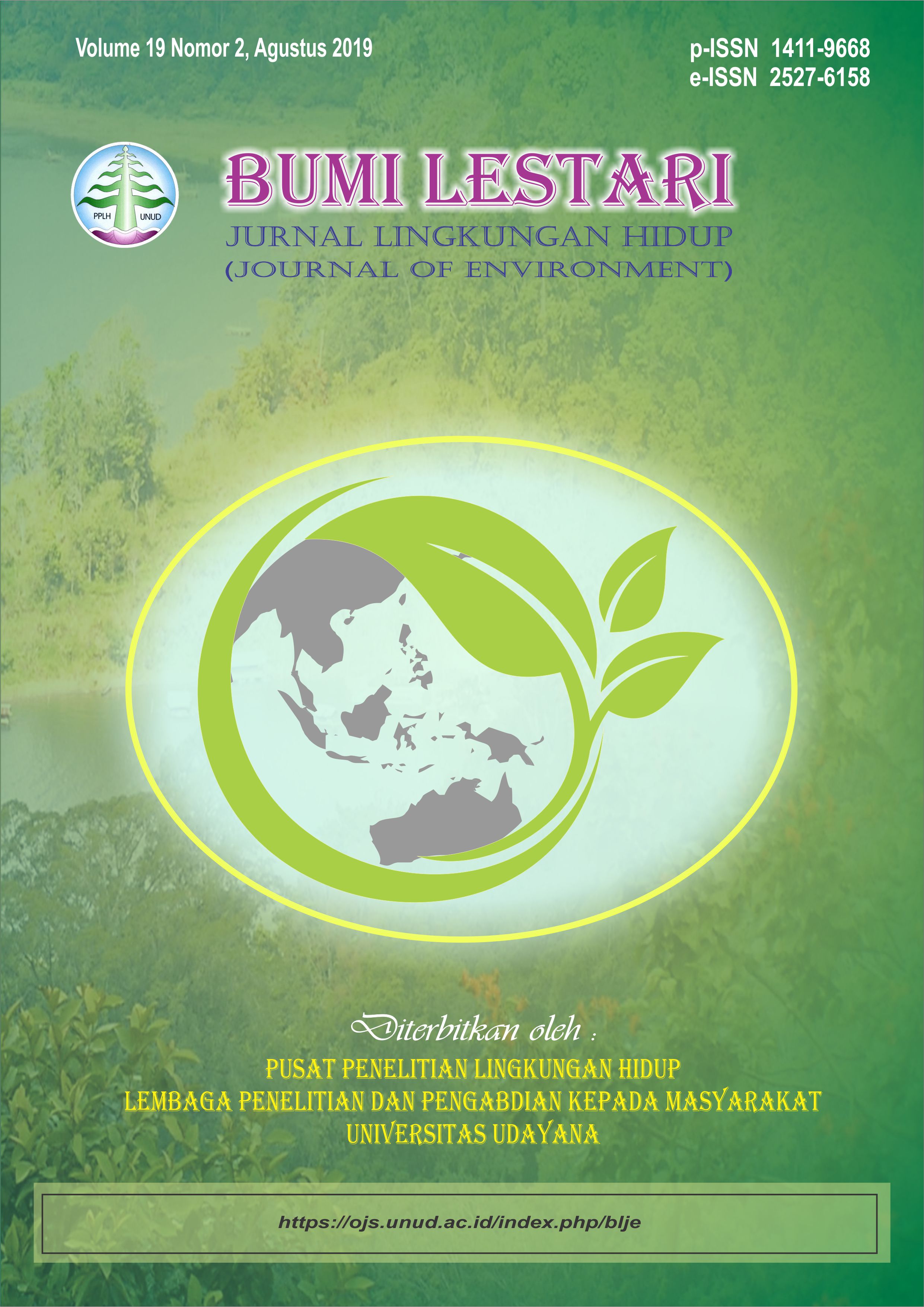Dampak Residu Pestisida Terhadap Kepadatan Dan Keanekaragaman Jamur Tanah Pada Lahan Sayuran
Abstract
The use of pesticides in agricultural soils in addition to a positive impact because it has a phytoponic effect for plants, also cause negative impacts on the environment. Pesticide residues in agricultural soils may cause disruption to the growth and diversity of useful microorganisms in the soil such as soil fungi. Fungi play an important role in nutrient cycling, disease control, binding of soil particles and as a remodel in the soil web chain. This research was conducted in farmer's land of Noelbaki village, Kupang Tengah sub-district, Kupang regency. The purpose of this research is to know the residue content of pesticide, population density and soil fungi diversity on vegetable land applied by pesticide and without pesticide. The research method is survey and sampling of soil on vegetable land application of pesticide and without pesticide soil type Vertisol and Inceptisol. The pesticide used as reference for test of active ingredient profenofos 500 g / l, lamda-cilhalotrin 106 g / l, permethrin 20.04 g / l, carbosulfan 200,11 g / l, dimetoate 400 g / l, mankozeb 80% and propineb 70% from classes of pyrethroids, carbamates and organophosphates. Analysis of pesticide residues on soil samples of soil pesticides Vertisol and Inceptisol detected residues of Lamda-cihalotrin and Dimethoat with concentrations of 0.060 ppm and 0.042 ppm respectively. Pesticide residue in the soil is below the BMR of 0.10 ppm. Population density analysis of Vertisol and Inceptisol soil type soil samples respectively (NV-1) 71.6 cfu g-1 and (NI-1) 21.6 cfu g-1 and without pesticides respectively (NV-2) 16.6 cfu g-1 and (NI-2) 29.2 cfu g-1. The analysis of soil pesticide soil diversity of Vertisol and Inceptisol soils respectively (NV-1) 1,608 (NI-1) 1,579 and without pesticide respectively (NV-2) 1.584 and (NI-2) 1,595. Result of analysis of medium soil fungi diversity where H> 1. The types of fungi that are identified are Penicillium, Aspergillus niger, Aspergillus candidus, Aspergilus flavus, Aspergilus nidulans, Fusarium, Trichoderma, and Mucor.
Downloads
Authors who publish with this journal agree to the following terms:
- All articles published by Bumi Lestari Journal of Environment and Environmental Reseach Center Udayana University are made available under an open access license worldwide immediately. This means everyone has free and unlimited access to the full-text of all articles published in Bumi Lestari Journal of Environment, and everyone is free to re-use the published material given proper accreditation/citation of the original publication. Open access publication is supported by authors' institutes or research funding agency by payment of a comparatively article processing charge for accepted articles (See Author Fees). Bumi Lestari Journal of Environment and Environmental Reseach Center Udayana University publish articles under the Creative Commons Attribution License.
- Authors are able to enter into separate, additional contractual arrangements for the non-exclusive distribution of the journal's published version of the work (e.g., post it to an institutional repository or publish it in a book), with an acknowledgement of its initial publication in this journal.
- Authors are permitted and encouraged to post their work online (e.g., in institutional repositories or on their website) prior to and during the submission process, as it can lead to productive exchanges, as well as earlier and greater citation of published work (See The Effect of Open Access).





